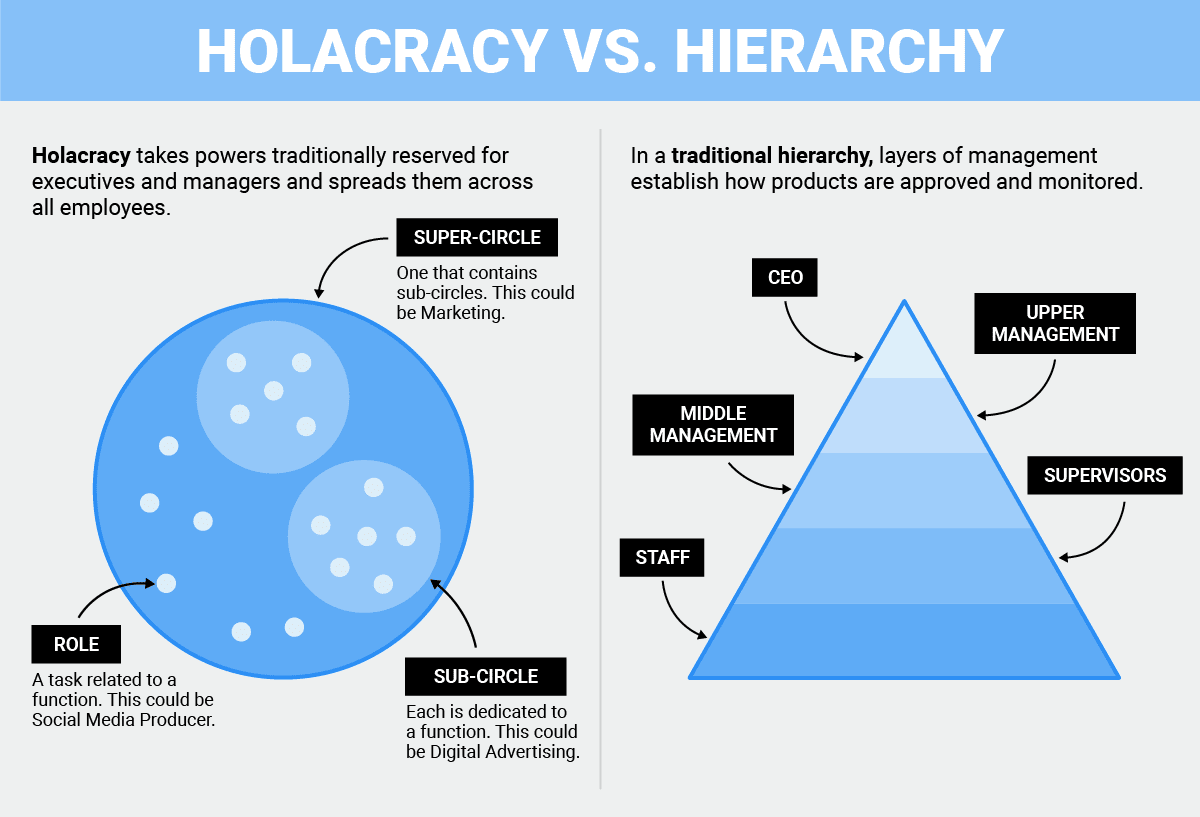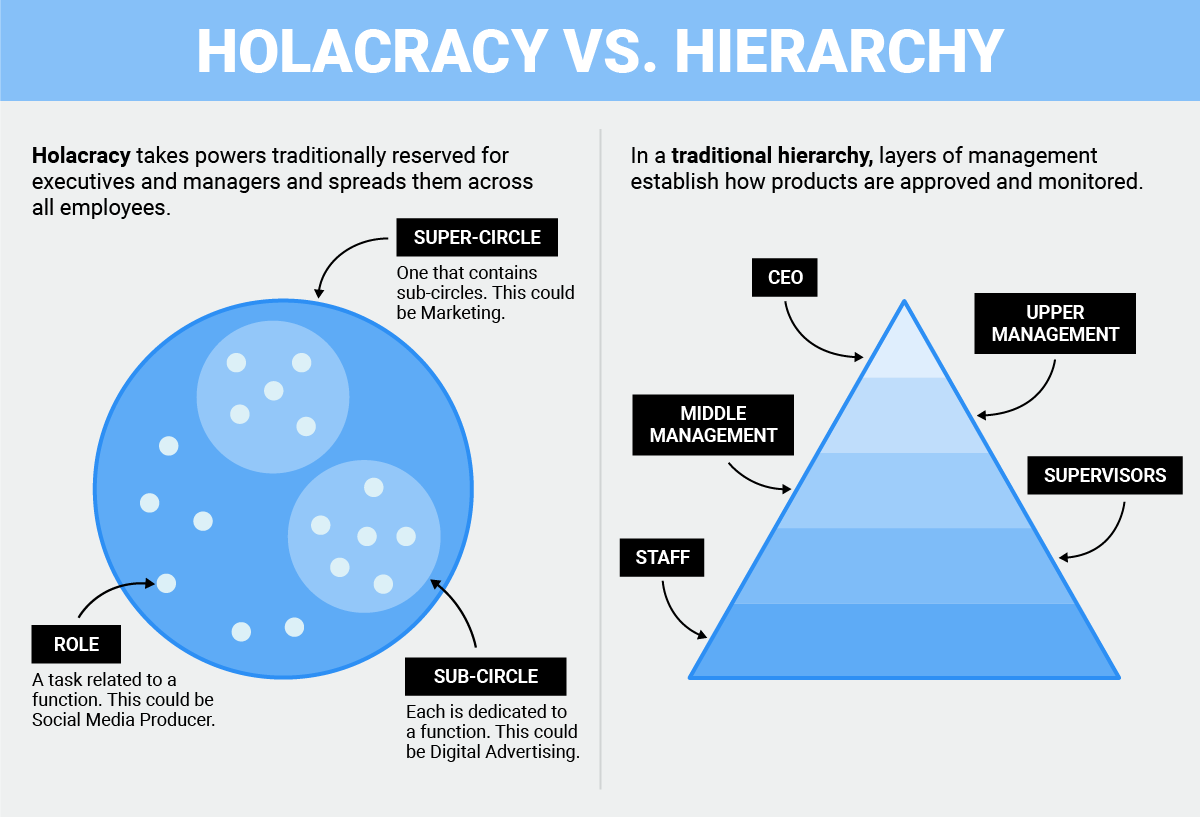Holacracy and Democracy

Many westerners have an obsession with democracy. And while this system may have had its merits earlier on in human history, it is far from perfect. As our society has progressed, democracy has proven itself to be an outdated concept in need of replacing. And Brian Robertson, who will be speaking at this year’s Future Frontiers, has developed a social technology that can potentially replace democracy and forever change our relationship to power.
An Alternative to Democracy
We are often told that democracy is the best form of governance and the only way to ensure that the will of the majority is brought to fruition. Yet, this adored system is severely flawed. For starters it assumes that the will of the majority is always the right thing to do. It also has no safeguard in place for instances when the will of the majority happens to be wrong. And to be sure, history is filled with examples the majority making grave mistakes.
Not to mention, democracy also relies heavily on some sort of central authority, which exists to implement the “will of the people” on the masses—whether they like it or not. And while democratic governments operate under the guise of being a system where everyone’s voice is heard, the truth of the matter is that only the loudest are heard and they still have to hope that those in power will abide by their will, and this doesn’t always happened. But we no longer have to rely on this structure.
From governments to businesses, our society has largely operated on some sort of hierarchical structure for centuries. While changing this system of governance might not be such an easy task, we can influence a broader cultural shift by first changing the way we run our businesses.
One viable alternative to our current power structure that can be tried in the business sector is Holacracy—an organization management system that lets companies run without bosses or other figureheads.
What is Holacracy?
Holacracy is a social technology created by Robertson, who penned the book Holacracy: The New Management System for a Rapidly Changing World. In addition to joining Future Frontiers this year, he was also a speaker in 2015. During his presentation a few years ago, Robertson showed a slide of the typical pyramid hierarchical structure we are used to dealing with, as can be seen below. He marveled at the fact that we have come so far when it comes to progress and innovation, yet, our work structures have stayed largely the same as they have been for the last 100 years.
At the top, a boss or business owner is calling the shots while those beneath him or her are dutifully obliged to do as they are told. Likening this type of structure to that of the fantasy world of Game of Thrones, where one does not question authority but exists to obey it, Robertson explained how oppressive this system has always been. No one looks to the days of feudalism, for example, as a beacon for modern day governance, and there is a good reason for that. This type of top down approach doesn’t work.
Robertson believes there is a better way of organizing humans and human relationships. Instead of the top down approach, Holacracy is a system based around the concept of emergent order, or the belief that order happens organically without the need for a central authority figure pulling the strings and directing individual action. In fact, the absence of a ruler or boss does not mean that we are all doomed to unravel into chaos. Instead, it might be the key to running a successful business. And, perhaps future governments as well.
Holacracy is a different kind of order. It relies on a framework of rules in which, as Robertson says, “free agents can interact and figure out how to best pursue their local purpose within an overall system. And healthy interconnections and relationships with others.” Instead of having a system where a king or boss is calling the shots, this type of framework provides a structure in which individuals understand the goal and what is expected, but they are free to pursue any necessary ends without having to be micromanaged or having their actions dictated to them. The chart below shows how this system differs from the outdated hierarchical structures.

Rather than being a rigid set of steadfast rules, Holacracy provides a framework, which can be founds in its constitution, and acts almost like a playbook does in football. There are still expectations and accountability mechanisms in place, but the Holacracy “playbook,” which is an open source document, is constantly evolving by those who are using it. It is, in many ways, a master code that sets the rules of the game but does not tell each individual how they must go about executing those rules.
One real world example of this type of framework of rules is Bitcoin. As Max Borders writes:
“If you’re into cryptocurrencies, you already know that command-and-control hierarchies can be destructive and inhumane. Satoshi Nakomoto, for example, wanted both to help us escape the inflationary Skinner box of central banking and build bitcoin in a decentralized way. The idea was to work with a growing team of coders and miners to build out the ecosystem, but no one would control the network. Satoshi changed our relationship to power — for both developers and users.”
It doesn’t matter what type of business is using it, they each use the same constitution since it is a metaframe work and not merely a “to do” list of how to act. An interested CEO wanting to begin implementing Holacracy in their business first signs a document relinquishing their power over the entity in question. This is an act that signals that they understand that they are, as Robertson says, “not above the law.” In this instance, the law is, of course, the Holacracy constitution. By doing so, they are giving their employees autonomy to fulfill their duties in the best possible way.
As Robertson explains, typically, if you are hired to fill a certain role at a company, you are expected to fulfill your duties as your supervisor sees fit. If you fail to do so as they would like, you might be asked to fall in line and adjust your actions. In Holacracy, on the other hand, if you are hired for a specific role, you are free to do whatever you need to do in order to get the duties of that role fulfilled. So long as the actions you are taking are not explicitly prohibited in the framework, you have the right to do what you think is best.
As Robertson says, “In society, I can do whatever I want with my property. But when I want to use my neighbors car, I better ask his permission, and I know the boundary.” Holacracy gives everyone in a participating ecosystem—be it a company or even perhaps a municipality— the boundaries. It does not, however, explicitly say what they can do inside those lines. The rules are transparent, every actor knows what is expected, but they each have the authority to decide how those expectations will be met.
More than 1000 companies are now using Holacracy, but imagine if this could be expanded and instituted in communities and cities as well. Our traditional power structures are crumbling and we are in need of viable alternatives. As complexity scientist Yaneer Bar-On writes:
“Why should governments fail? Because leaders, whether self-appointed dictators, or elected officials, are unable to identify what policies will be good for a complex society. The unintended consequences are beyond their comprehension. Regardless of values or objectives, the outcomes are far from what they intend.”
Instead of governments micromanaging individuals, we could implement a system, like Holacracy, where a framework is provided, but humans are free to innovate and create without being met by unnecessary bureaucratic hurdles that stifle progress and inhibiting our ability to evolve with the changing times.
Watch Robertson’s previous Future Frontiers talk and learn more about Holacracy.



